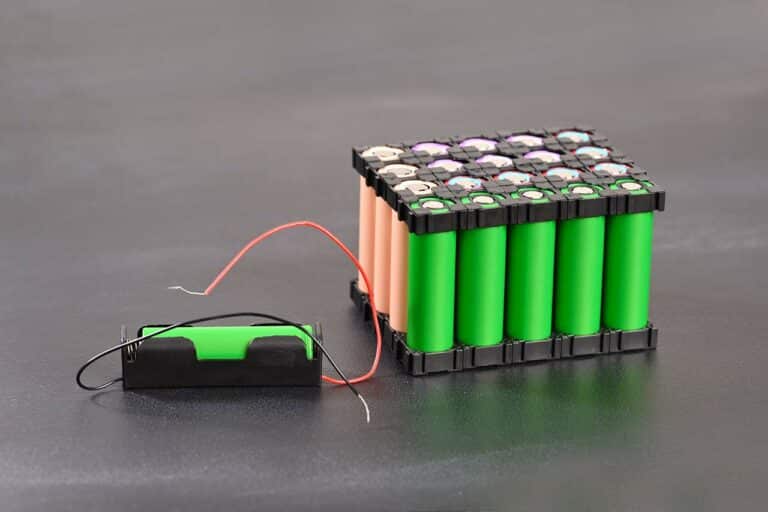Lithium vs Alkaline Batteries: Power Outage Performance Comparison
When it comes to emergency preparedness, choosing the right batteries for your devices is essential. You never know when a power outage might leave you fumbling in the dark, so making the right choice between lithium and alkaline batteries can be a real game-changer. Let’s dive in and explore the pros and cons of these two popular battery types.
Understanding Alkaline Batteries
Alkaline batteries are affordable and widely available. (If you’ve ever walked through a checkout line in a supermarket, you know just how available this battery type can be.) While they might not last as long as lithium batteries, they can still provide a decent amount of power during a blackout to power many types of devices. And it’s easy to store a lot of them.
Construction of Alkaline Batteries
Alkaline batteries are made up of a few key components that work together to create a chemical reaction and generate electricity. The anode is made from a zinc paste, while the cathode is composed of manganese dioxide. A brass rod is placed in the center of the battery, acting as a current collector. The whole structure is housed in a steel case, which is usually iron or nickel plating.
The chemical reaction occurs between the anode and cathode when connected to a device. An alkaline electrolyte, usually potassium hydroxide, allows ions to travel freely between the two components. This flow of ions generates the current that powers your devices.
Chemistry Behind Alkaline Batteries
The chemistry of an alkaline battery revolves around the redox reaction occurring between the anode and cathode materials. The anode (zinc paste) undergoes oxidation, losing electrons and forming zinc ions. The cathode (manganese dioxide) gets reduced, gaining the electrons from the anode. This flow of electrons creates an electric current that powers your devices.
Alkaline batteries have a nominal voltage of 1.5V. The battery maintains this voltage through most of its life, but drops as the chemical reaction progresses and the battery’s capacity decreases.
Common Applications of Alkaline Batteries
Since alkaline batteries come in various sizes, including AAA, AA, C, and D, they have a wide range of applications in smaller items. Some common uses for alkaline batteries are:
- Flashlights
- Portable radios
- Battery-powered fans
- Smoke detectors
- Remote controls
- Toys
These batteries are often the go-to choice for everyday devices due to their long shelf life, good performance, and relatively low cost.
Understanding Lithium Batteries
Lithium batteries have a major advantage when it comes to their shelf life. They store more energy for longer periods, outlasting alkaline batteries by about double the lifespan. This makes them an excellent choice for your emergency supply, ensuring that your devices will have a reliable power source when you need them most.
Composition of Lithium Batteries
Lithium batteries are composed of materials such as cobalt, graphite, and lithium. These materials are considered critical for their performance. In a typical lithium-ion battery, you’ll find a cathode, an anode, and an electrolyte. The cathode is made of a lithium metal oxide, while the anode consists of a graphite-containing material. These components work together to provide power to your devices.
Chemistry of Lithium Batteries
The heart of a lithium-ion battery lies in the electrolyte and anode materials. The electrolyte, usually a lithium salt dissolved in a solvent, plays a crucial role in facilitating the smooth and efficient transfer of lithium ions between the anode and cathode. This movement of ions generates a voltage, with lithium batteries typically having a nominal voltage of 3.6 or 3.7 volts. As you recharge these batteries, the flow of ions goes back and forth between the electrodes, ensuring long-lasting power.
Applications of Lithium Batteries
Lithium-ion batteries are quite versatile, and you’ll find them in various applications. They’re a popular choice for rechargeable batteries in electronic gadgets like smartphones, laptops, and cameras. It makes sense that they’ve become a go-to option for many devices, as they can hold a charge for more extended periods and are lightweight compared to other battery types.
If you need to power up your devices during a power outage, lithium batteries in various sizes, such as AA, AAA, C, and D, can come in handy. These batteries work well in emergency situations because their high energy density and long run time keep your devices running for longer.
As for rechargeable lithium batteries, it can be useful to know they do make solar lithium battery chargers.
Analyzing Alkaline vs Lithium Batteries
So, we’ve gone over alkaline batteries and lithium batteries, their benefits, and what they can do. Now, let’s compare them feature to feature.
Cost
Alkaline batteries are more affordable than lithium batteries, making them a popular option for everyday devices.
Lithium batteries may have a higher upfront cost but can provide better long-term value due to their performance.
Capacity
Lithium batteries have high energy density and offer longer-lasting power than alkaline batteries. This makes them particularly useful in high-drain devices and situations where long-term reliability is crucial. Alkaline batteries, while versatile, generally have a lower energy density.
Shelf Life
Both alkaline and lithium batteries can last several years on the shelf, but lithium batteries typically have a longer shelf life than alkaline. This means you can store them in your emergency kit for longer periods without worrying about them losing their charge.
Cycle Life
Since disposable alkaline and lithium batteries are designed for single-use, cycle life isn’t a relevant factor.
However, for rechargeable batteries, lithium-ion variants will usually have a higher cycle life than nickel-metal hydride (NiMH) rechargeable alkaline batteries.
Discharge Curve
Alkaline batteries have a gradually decreasing discharge curve, meaning their voltage drops as they lose capacity.
Lithium batteries maintain a stable voltage throughout most of their discharge cycle, providing consistent performance.
Power
Lithium batteries deliver higher power output, making them ideal for devices that need a strong current.
Alkaline batteries can still provide ample power for many devices but may be less efficient in high-drain situations.
Weight
Lithium batteries are lighter than their alkaline counterparts, which can help reduce the burden of carrying supplies during an emergency.
Voltage
The average alkaline battery has a voltage of 1.5V.
Lithium batteries may offer higher voltages, especially in rechargeable variants. Increased voltage can translate to improved performance in some devices.
Longer Lifespan
Lithium batteries tend to have a longer lifespan overall compared to alkaline batteries, particularly when used in high-drain devices. This can be attributed to their higher energy density and more consistent discharge curve.
Batteries and Power Outages
In our technology-driven world, the right choice of battery can spell the difference between light and darkness during unforeseen circumstances. Both alkaline and lithium batteries offer unique advantages, each serving specific needs and applications.
Alkaline batteries, with their accessibility and affordability, provide a reliable source of power for everyday use.
Lithium batteries, with their extended lifespan and performance, become indispensable allies during emergencies.
Ultimately, understanding the characteristics and strengths of each type of battery enables us to make informed decisions, ensuring that when the lights go out, we’re not just prepared but empowered.







